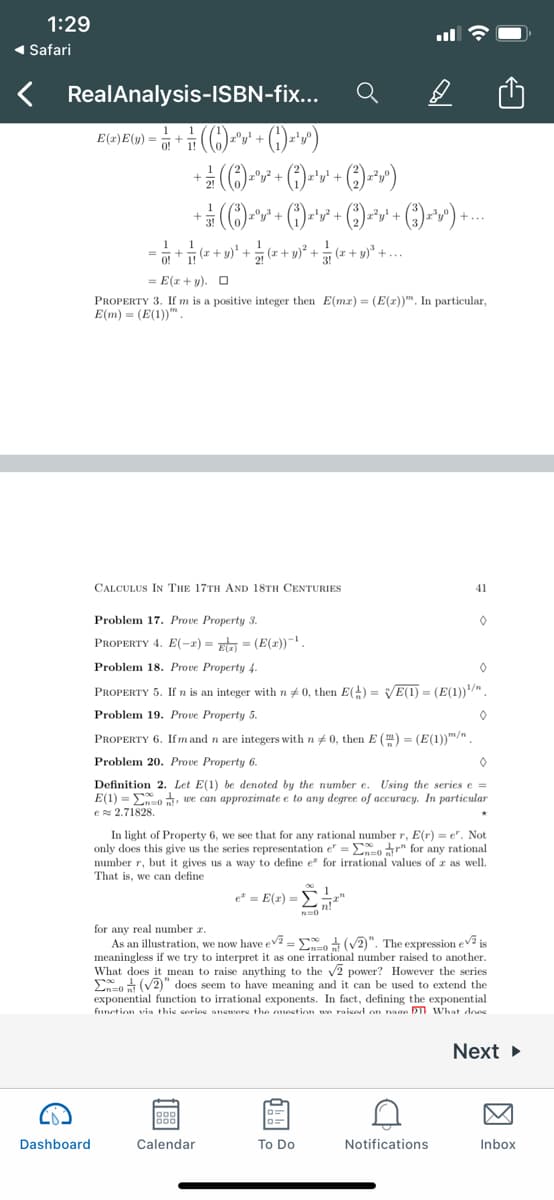Problem 19. Prove Property 5.
Algebra & Trigonometry with Analytic Geometry
13th Edition
ISBN:9781133382119
Author:Swokowski
Publisher:Swokowski
Chapter5: Inverse, Exponential, And Logarithmic Functions
Section5.6: Exponential And Logarithmic Equations
Problem 64E
Related questions
Question
#19

Transcribed Image Text:1:29
( Safari
RealAnalysis-ISBN-fix...
+ y)?
O!
E(r+ y). O
PROPERTY 3. If m is a positive integer then E(mr) = (E(r))". In particular,
E(m) = (E(1))".
CALCULUS IN THe 17TH AND 18TH CENTURIES
41
Problem 17. Prove Property 3.
PROPERTY 4. E(-x) = x = (E(2))-.
Problem 18. Prove Property 4.
PROPERTY 5. If n is an integer with n+ 0, then E() = VE(1) = (E(1))/"
Problem 19. Prove Property 5.
PROPERTY 6. Ifm and n are integers with n # 0, then E () = (E(1))/".
Problem 20. Prove Property 6.
Definition 2. Let E(1) be denoted by the number e. Using the series e =
E(1) = Eo, we can approrimate e to any degree of accuracy. In particular
e 2.71828.
In light of Property 6, we see that for any rational number r, E(r) = e". Not
only does this give us the series representation e" = Eo r" for any rational
number r, but it gives us a way to define e for irrational values of r as well.
That is, we can define
e = E(r) =
for any real number z.
As an illustration, we now have ev =E (V2)". The expression ev2 is
meaningless if we try to interpret it as one irrational number raised to another.
What does it mean to raise anything to the v2 power? However the series
En (V2)" does seem to have meaning and it can be used to extend the
exponential function to irrational exponents. In fact, defining the exponential
function via thie eorine anewore the oneetion un raiend on nase DT What does
Next
Dashboard
Calendar
To Do
Notifications
Inbox
因
Expert Solution
This question has been solved!
Explore an expertly crafted, step-by-step solution for a thorough understanding of key concepts.
Step by step
Solved in 2 steps

Recommended textbooks for you

Algebra & Trigonometry with Analytic Geometry
Algebra
ISBN:
9781133382119
Author:
Swokowski
Publisher:
Cengage


Algebra & Trigonometry with Analytic Geometry
Algebra
ISBN:
9781133382119
Author:
Swokowski
Publisher:
Cengage
